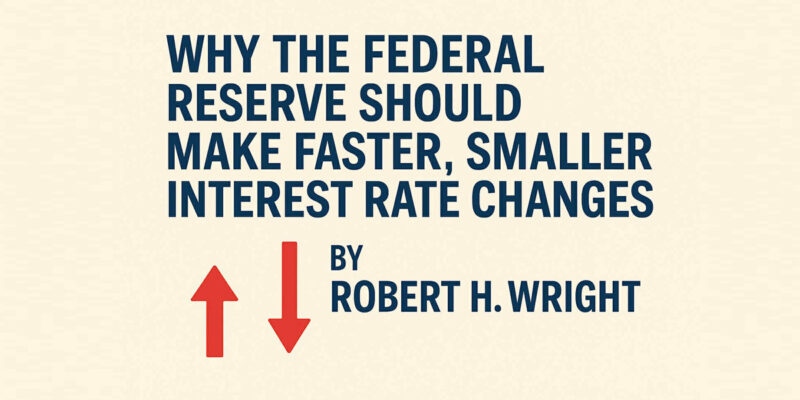Editor’s Note: a guest post by Robert Wright
If you’ve been paying attention to the economy lately, you’ve probably noticed how interest rates and inflation seem to swing wildly — leaving many people struggling with rising mortgage payments, loan costs, or just the price of everyday goods. A big reason for this volatility lies in how the Federal Reserve adjusts interest rates.
Traditionally, the Fed waits for clear economic data over months before making fairly large interest rate changes. When inflation or economic slowdowns become obvious, the Fed often responds with big hikes or cuts, which can shock markets, disrupt borrowing, and hurt families and businesses.
But what if the Fed adopted a different approach? One where it makes swift, small, and frequent interest rate adjustments, both up and down, to proactively manage inflation and economic growth? This “fine-tuning” strategy could reduce the need for drastic moves and smooth out the economy’s ups and downs.
The Problem With Waiting Too Long
When the Fed delays raising rates as inflation builds, prices can spiral out of control. Conversely, when it waits to cut rates during a slowdown, recessions can deepen. The recent inflation surge in 2021-2022 is a perfect example: low rates stayed too long, then the Fed had to hike aggressively, causing mortgage rates and borrowing costs to jump suddenly.
The Benefits of Quick, Incremental Changes
Making small rate adjustments early and often allows the Fed to:
- Control inflation before it escalates
- Support economic growth gently when needed
- Avoid disruptive rate shocks to markets and borrowers
- Build public and market confidence through steady, predictable policy
Challenges to Consider
Of course, this approach requires better real-time data and faster analysis to avoid reacting to misleading short-term trends. It also demands clear communication from the Fed to avoid confusing markets or seeming indecisive.
A More Agile Federal Reserve
As economic data tools improve, the Fed has an opportunity to become more nimble. By adopting a strategy of dynamic, frequent, and modest rate changes, the Fed could protect the economy and everyday Americans from the pain of abrupt interest rate shocks.
It’s time for the Federal Reserve to embrace this more agile approach — for a steadier economy and financial peace of mind for all.
Advertisement
Advertisement

